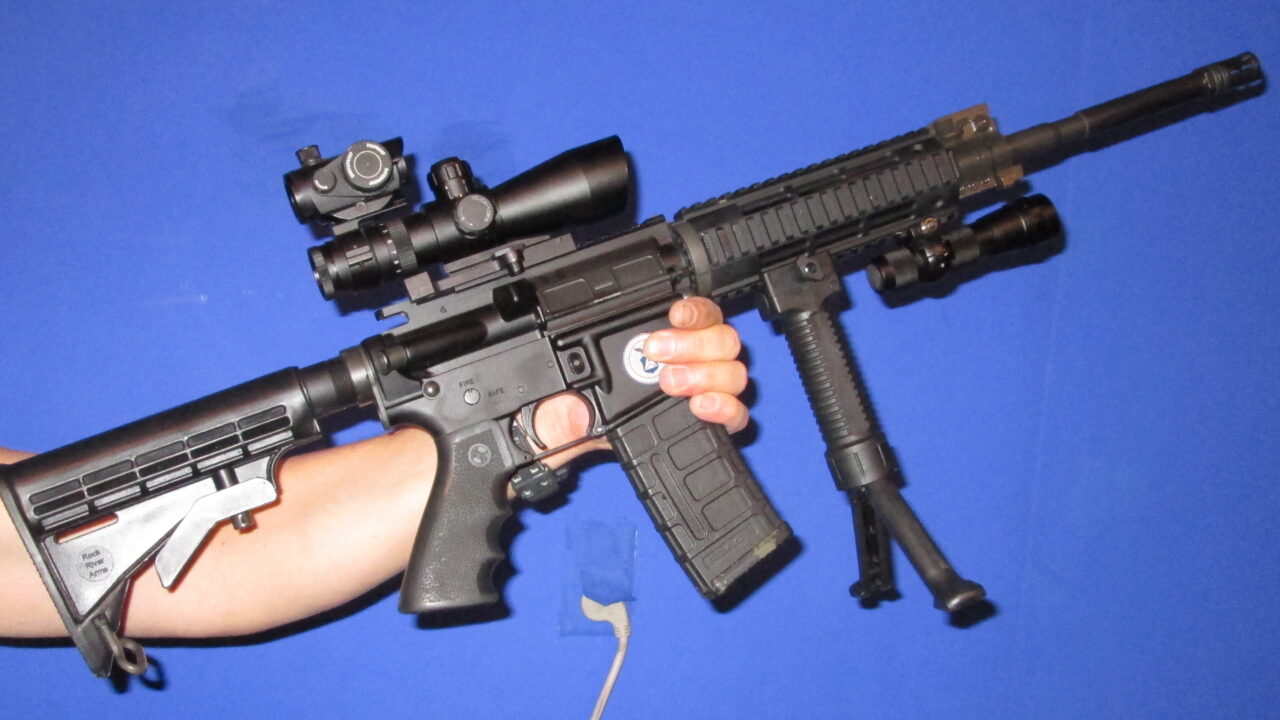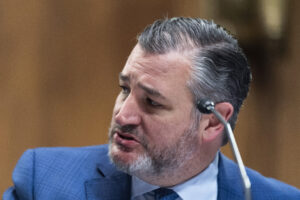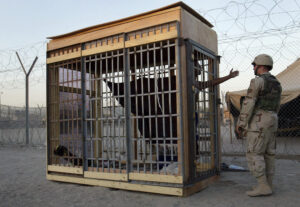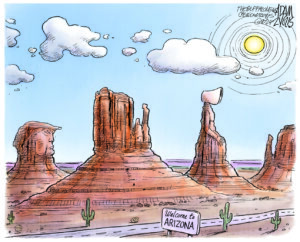Reinstate the Assault Weapons Ban
Gun control laws do not pass because the Republican Party is owned — lock, stock, and barrel — by the gun industry. U.S. Military Heckler & Koch HK416 assault rifle. Photo: Wikimedia Commons
U.S. Military Heckler & Koch HK416 assault rifle. Photo: Wikimedia Commons
Monday morning, a 28-year-old armed with assault rifles entered a Christian school in Nashville and fatally shot three nine-year-old children and three staff members before she was shot and killed by the police.
It makes me weep. It’s happening again and again and again. Our children.
President Biden renewed his call for Congress to reinstate the Assault Weapons Ban, but with Republicans in control of the House, there’s little to no chance.
So far this year, there have been 129 mass shootings in the United States.
Ten of the 17 deadliest U.S. mass shootings since 2012 have involved AR-15s. In a review of the history of the AR-15, The Washington Post reports that it was originally designed in the 1950s as a soldiers’ rifle. “An outstanding weapon with phenomenal lethality,” according to an internal Pentagon report. It soon became standard issue for U.S. troops in Vietnam (where the weapon was called the M16).
After the Assault Weapons Ban ended in 2004, gun manufacturers saw a chance to ride a post-9/11 surge in military glorification.
Few gunmakers envisioned that ordinary people would buy the semi-automatic version, which didn’t seem suited for hunting and appeared overkill for home defense. The National Rifle Association and other industry allies focused on promoting traditional rifles and handguns.
Today, the AR-15 is the bestselling rifle in the United States, owned by about 1 in 20 U.S. adults, or roughly 16 million people. It dominates the walls and websites of gun dealers. (Republican Rep. Barry Moore of Alabama has even introduced a bill to declare the AR-15 the “National Gun of America.”)
What accounts for this dramatic change? Follow the money. The early 2000s were a tough time for the firearms industry. Gun sales had been flat for several years. But after the Assault Weapons Ban ended in 2004, gun manufacturers saw a chance to ride a post-9/11 surge in military glorification. As America soldiers were seen in Afghanistan and Iraq wearing tactical gear and holding M16 and M4 carbine rifles, gunmakers used the conflict-zone images to market AR-15s.
“We made it look cool,” said Randy Luth, the founder of gunmaker DPMS, one of the earliest companies to promote AR-15s. “The same reason you buy a Corvette.”
One Smith & Wesson AR-15 ended up in the hands of Kyle Rittenhouse, the teenager who fatally shot two people and wounded a third during 2020’s racial justice protests in Kenosha, Wisconsin. As Rittenhouse explained during his trial, he chose an AR-15 because “I thought it looked cool.”
Another AR-15 was alluring to the gunman who killed 10 Black people at a supermarket in Buffalo in May 2022. “The AR-15 and its variants are very deadly when used properly,” he wrote in a manifesto filled with racial vitriol. “Which is the reason I picked one.” Ten days later, 19 schoolchildren and two adults were shot to death in Uvalde, Texas, with another AR-15.
The string of attacks prompted President Biden, who as a senator had strongly supported the 1994 Assault Weapons Ban, to promise a renewed effort to stop the sale of military-style weapons. Last year, the Democratic-led House passed a new Assault Weapons Ban on a tight party-line vote of 217-213 — the first time the measure had been voted on in nearly three decades. But the Senate, also run by Democrats, never took action.
When Bill Clinton signed the original Assault Weapons Ban in 1994, he was widely condemned by Republicans and gun owners. The Democrats’ subsequent losses of the House and Senate in the 1996 midterm elections were partly blamed on the ban. But it saved lives.
The 10-year length of the ban has allowed researchers to compare mass shooting deaths before, during, and after the ban.
You might think that preventing young children from being murdered in random mass killings by assailants with assault weapons would be a goal shared by all lawmakers.
Before: From 1981 (the earliest year analyzed) until the ban went into effect in 1994, the proportion of deaths in mass shootings in which an assault rifle was used was lower than it is today, and the average number of yearly deaths attributed to mass shootings was 7.2.
During: In the years after the Assault Weapons Ban went into effect, the average number of yearly deaths from mass shootings fell to 5.3. Even including 1999’s Columbine High School massacre (the deadliest mass shooting during the period of the ban), the 1994 to 2004 period saw lower average annual rates of both mass shootings and deaths resulting from such incidents than before the ban’s inception.
After: In the years after the Assault Weapons Ban expired in 2004, the data shows an almost immediate —and steep—rise in mass shooting deaths to an average of 25.
Researchers have calculated that the risk of a person in the U.S. dying in a mass shooting was 70 percent lower when the Assault Weapons Ban was in place than it is today.
Facts, data, logic, analysis—do they play any role in what our government decides? The Republican Party in particular no longer listens, or thinks. It is owned—lock, stock, and barrel—by the gun industry.
You might think that preventing young children from being murdered in random mass killings by assailants with assault weapons would be a goal shared by all lawmakers. But you’d be wrong.
The Assault Weapons Ban must be reinstated—the greed of gun manufacturers be damned.
Your support matters…Independent journalism is under threat and overshadowed by heavily funded mainstream media.
You can help level the playing field. Become a member.
Your tax-deductible contribution keeps us digging beneath the headlines to give you thought-provoking, investigative reporting and analysis that unearths what's really happening- without compromise.
Give today to support our courageous, independent journalists.









You need to be a supporter to comment.
There are currently no responses to this article.
Be the first to respond.